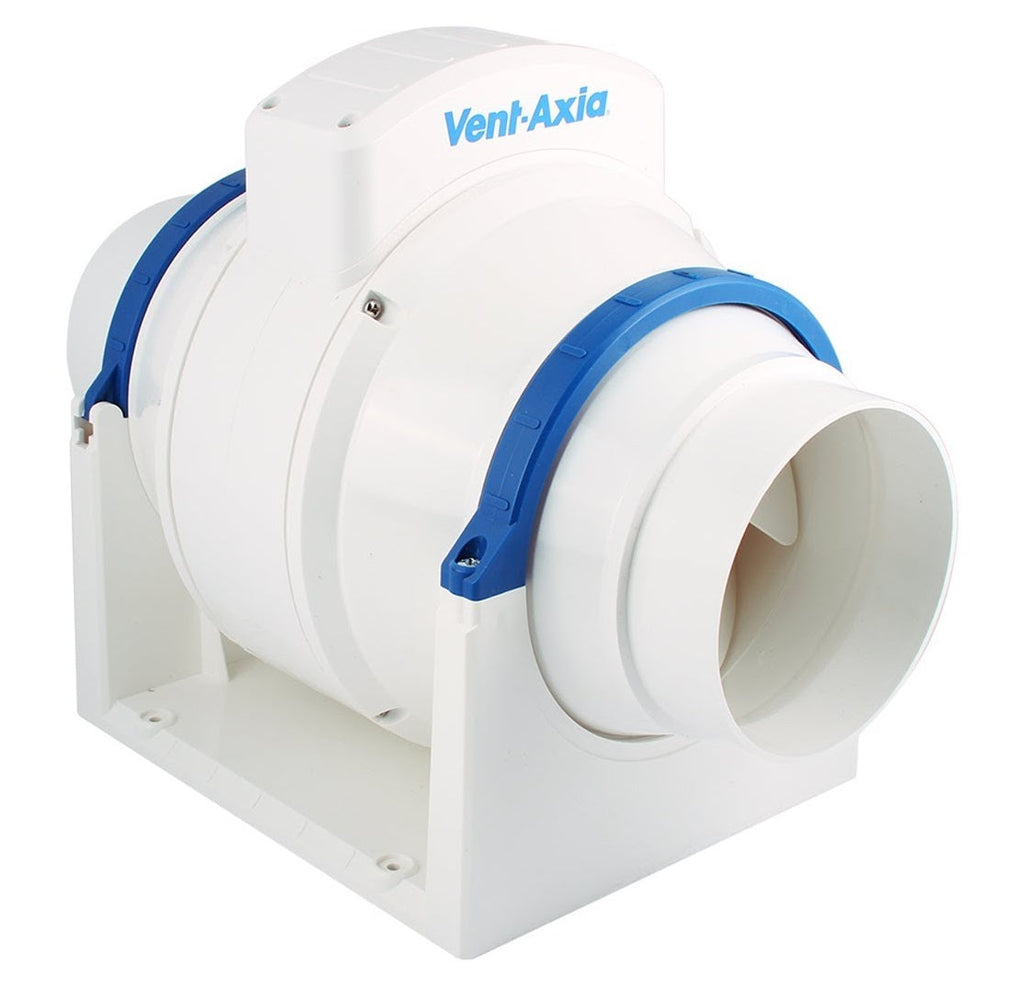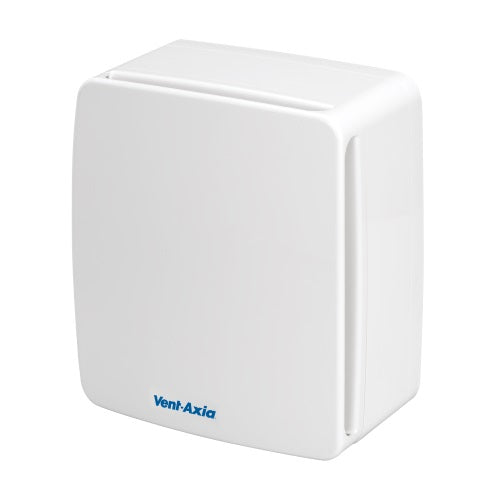- Joined
- 12 Mar 2022
- Messages
- 4
- Reaction score
- 0
- Country

Hello
I need a new bathroom extractor fan and I'm wondering whether to get an inline axial fan or a centrifugal one so looking for a bit of advice...
Bathroom is internal (no windows) and currently has a fairly cheap ceiling-mounted axial fan (Greenwood Airvac EL100) that isn't really working. I think the main reason for that is because the ducting run is very long - about 8.5m with two 90-degree bends (over the ceiling, down to the floor thru a boxed-in wall cavity, under the floor of the adjacent room and then finally out the exterior wall of the house. The long run under the floor is a plastic pipe but the rest I think is 4" flexible ducting, the usual concertina-like stuff). I read somewhere that a 90-degree bend adds about the same amount of friction as a metre of straight ducting, if true that would make our ducting add up to 10.5m in total. The spec sheet for the Greenwood fan says it's suitable for up to 2.5m of ducting. Extraction rate is 96 cubic metres/hour or 26 litres/sec.
Just looking at what's on offer, I can see there are inline axial fans and centrifugal ones that offer more than double the extraction rate of our current one, for £100-£200
E.g. this Vent-Axia one

 www.airconcentre.co.uk
or this centrifugal one
www.airconcentre.co.uk
or this centrifugal one

 www.airconcentre.co.uk
www.airconcentre.co.uk
It's an old Victorian house with 10ft ceilings and the bathroom has a false ceiling about 8ft high, so I think there should be plenty of space for an inline axial fan. But I've noticed people making blanket statements about centrifugal fans being generally better without really explaining why? Are they quieter, more reliable, less expensive to run?
Thanks
I need a new bathroom extractor fan and I'm wondering whether to get an inline axial fan or a centrifugal one so looking for a bit of advice...
Bathroom is internal (no windows) and currently has a fairly cheap ceiling-mounted axial fan (Greenwood Airvac EL100) that isn't really working. I think the main reason for that is because the ducting run is very long - about 8.5m with two 90-degree bends (over the ceiling, down to the floor thru a boxed-in wall cavity, under the floor of the adjacent room and then finally out the exterior wall of the house. The long run under the floor is a plastic pipe but the rest I think is 4" flexible ducting, the usual concertina-like stuff). I read somewhere that a 90-degree bend adds about the same amount of friction as a metre of straight ducting, if true that would make our ducting add up to 10.5m in total. The spec sheet for the Greenwood fan says it's suitable for up to 2.5m of ducting. Extraction rate is 96 cubic metres/hour or 26 litres/sec.
Just looking at what's on offer, I can see there are inline axial fans and centrifugal ones that offer more than double the extraction rate of our current one, for £100-£200
E.g. this Vent-Axia one

Vent-Axia ACM100 4
Vent Axia's ACM100 has long been regarded as the industry standard for inline fans. Vent Axia's superb build quality marries very high extraction rates with extremely low noise levels. Indeed the ACM100 is the quietest inline fan available. The ACM utilizes a 'mixed-flow' impeller, allowing it...
 www.airconcentre.co.uk
www.airconcentre.co.uk

Vent-Axia Centrif Duo Plus Extractor Fan With Timer - 431614
Features: Easy Installation Fan can be wall or ceiling mounted Suitable for both kitchen and utility rooms Constant trickle boost speed available on DP & HTP models Colour: White
 www.airconcentre.co.uk
www.airconcentre.co.uk
It's an old Victorian house with 10ft ceilings and the bathroom has a false ceiling about 8ft high, so I think there should be plenty of space for an inline axial fan. But I've noticed people making blanket statements about centrifugal fans being generally better without really explaining why? Are they quieter, more reliable, less expensive to run?
Thanks
